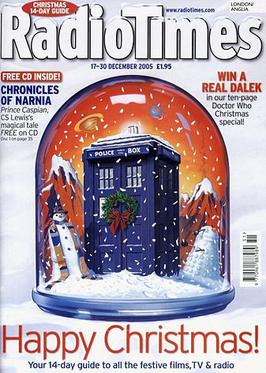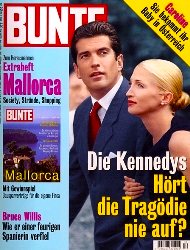The mass media in Belarus are mass-media outlets based in Belarus. Television, magazines, and newspapers are operated by state-owned and for-profit corporations and depend on advertising, subscriptions, and other sales-related revenue. The Constitution of Belarus guarantees freedom of speech, but this is contradicted in practice by repressive and restrictive laws. Arbitrary detention, arrests, and harassment of journalists are frequent in Belarus. Anti-extremism legislation targets independent journalism, including material considered unfavourable to the president.
Video on demand (VOD) is a media distribution system that allows users to access videos, television shows and films without a traditional video playback device and a typical static broadcasting schedule. In the 20th century, broadcasting in the form of over-the-air programming was the most common form of media distribution. As Internet and IPTV technologies continued to develop in the 1990s, consumers began to gravitate towards non-traditional modes of content consumption, which culminated in the arrival of VOD on televisions and personal computers.
Regular television broadcasts in the United Kingdom started in 1936 as a public service which was free of advertising, which followed the first demonstration of a transmitted moving image in 1926. Currently, the United Kingdom has a collection of free-to-air, free-to-view and subscription services over a variety of distribution media, through which there are over 480 channels for consumers as well as on-demand content. There are six main channel owners who are responsible for most material viewed.

TV Guide is an American digital media company that provides television program listings information as well as entertainment and television-related news.

Radio Times is a British weekly listings magazine devoted to television and radio programme schedules, with other features such as interviews, film reviews and lifestyle items. Founded in May 1923 by John Reith, then general manager of the British Broadcasting Company, it was the world's first broadcast listings magazine.

Sky Network Television Limited, more commonly known as Sky, is a New Zealand broadcasting company that provides pay television services via satellite, media streaming services and broadband internet services. As of 31 December 2022, Sky had 1,023,378 residential television subscribers consisting of 517,003 satellite subscribers and 506,375 streaming subscribers. Additionally, Sky had 23,156 broadband customers. Despite the similarity of name, branding and services, such as Sky Go and MySky shared with its European equivalent, Sky, there is no connection between the companies.
Pay television, also known as subscription television, premium television or, when referring to an individual service, a premium channel, refers to subscription-based television services, usually provided by multichannel television providers, but also increasingly via digital terrestrial and streaming television. In the United States, subscription television began in the late 1970s and early 1980s in the form of encrypted analog over-the-air broadcast television which could be decrypted with special equipment. The concept rapidly expanded through the multi-channel transition and into the post-network era. Other parts of the world beyond the United States, such as France and Latin America have also offered encrypted analog terrestrial signals available for subscription.

Us Weekly is a weekly celebrity and entertainment magazine based in New York City. Us Weekly was founded in 1977 by The New York Times Company, who sold it in 1980. It was acquired by Wenner Media in 1986, and sold to American Media Inc. in 2017. Shortly afterward, former editor James Heidenry stepped down, and was replaced by Jennifer Peros. The chief content officer of American Media, Dylan Howard, oversees the publication.

Canale 5 is an Italian free-to-air television channel of Mediaset, owned by MFE - MediaForEurope. It was the first private television network to have national coverage in Italy in 1980. On 4 December 2012, Mediaset launched Canale 5 HD, a simulcast of Canale 5 in high-definition. The channel is aimed at a primarily adult audience, offering, mainly, entertainment, movies and TV series. Since January 2013, Canale 5 has been directed by Giancarlo Scheri.

TV listings are a printed or electronic timetable of television programs. Often intended for consumer use, these provide information concerning programming scheduled to be broadcast on various television channels available to the reader – either via terrestrial, free-to-air, cable, satellite or over-the-top MVPD – indicating at what time and on what channel they are due to be broadcast over a period usually encompassing about seven- to 14-days in advance.

Bunte is a German-language weekly celebrity gossip magazine published by Hubert Burda Media. The first edition was published in 1948 under the name Das Ufer. Under the leadership of Hubert Burda, Bunte developed into a modern popular magazine. In 2014, Bunte was the 11th most popular media brand in Germany, with 10.57 million monthly users. After Patricia Riekel stepped down, Robert Pölzer took over as Editor-in-Chief in July 2016.

TV4 is a Swedish free-to-air television network owned by TV4 AB, a subsidiary of the TV4 Media AB. It started broadcasting by satellite in 1990 and, since 1992, on terrestrial television. In 1994, TV4 became the largest channel and remained so for a number of years. The two channels of Sveriges Television (SVT) lost more and more viewers for a couple of years. After making schedule changes in 2001, SVT1 had practically the same numbers of viewers as TV4. From 2004 to 2019, the TV4 Group was a fully active member of the European Broadcasting Union.

Look was a biweekly, general-interest magazine published in Des Moines, Iowa, from 1937 to 1971, with editorial offices in New York City. It had an emphasis on photographs and photojournalism in addition to human interest and lifestyle articles. A large-sized magazine of 11 in × 14 in, it was a direct competitor to market leader Life, which began publication 3 months earlier and ended in 1972, 14 months after Look shut down.

The mass media in Indonesia consist of several different types of communications media: television, radio, cinema, newspapers, magazines, and Internet-based websites.

TV Guide is an American biweekly magazine that provides television program listings information as well as television-related news, celebrity interviews and gossip, film reviews, crossword puzzles, and, in some issues, horoscopes. The print magazine's operating company, TV Guide Magazine LLC, is owned by NTVB Media since 2015. The magazine was spun off from TV Guide in 2008 by then-owner Macrovision to OpenGate Capital for $1 and a $9.5 million loan.

Agora Spółka Akcyjna is a Polish media company. Agora and Gazeta Wyborcza were created on the eve of the parliamentary elections in 1989. Gazeta Wyborcza became the first independent newspaper in Poland, while Agora grew into one of the largest and most renowned media companies in Poland. Since 1999 Agora's shares have been listed on the Warsaw Stock Exchange.

A newspaper is a periodical publication containing written information about current events and is often typed in black ink with a white or gray background. Newspapers can cover a wide variety of fields such as politics, business, sports, art, and science. They often include materials such as opinion columns, weather forecasts, reviews of local services, obituaries, birth notices, crosswords, editorial cartoons, comic strips, and advice columns.

Sesame Street Magazine is an American monthly magazine based on the children's television series Sesame Street. The magazine features characters from the television series, and emphasizes Sesame Street's educational goals. The intended audience includes children under the age of five and their parents.
'AdZyklopädie' is a German coined word with the meaning encyclopedia for advertisements. The AdZyklopädie is a digital archive for advertising, independently storing old and current advertisements from different media on a large scale – advertisements from public or professional journals, newspapers, TV, cinema, posters/Out-of-Home, internet, Infoscreen, digital signage, airport advertising, radio advertising.
Seidels Reklame was a German advertising trade and graphic art magazine which was in circulation between 1913 and 1942. It was based in Berlin, Germany.














